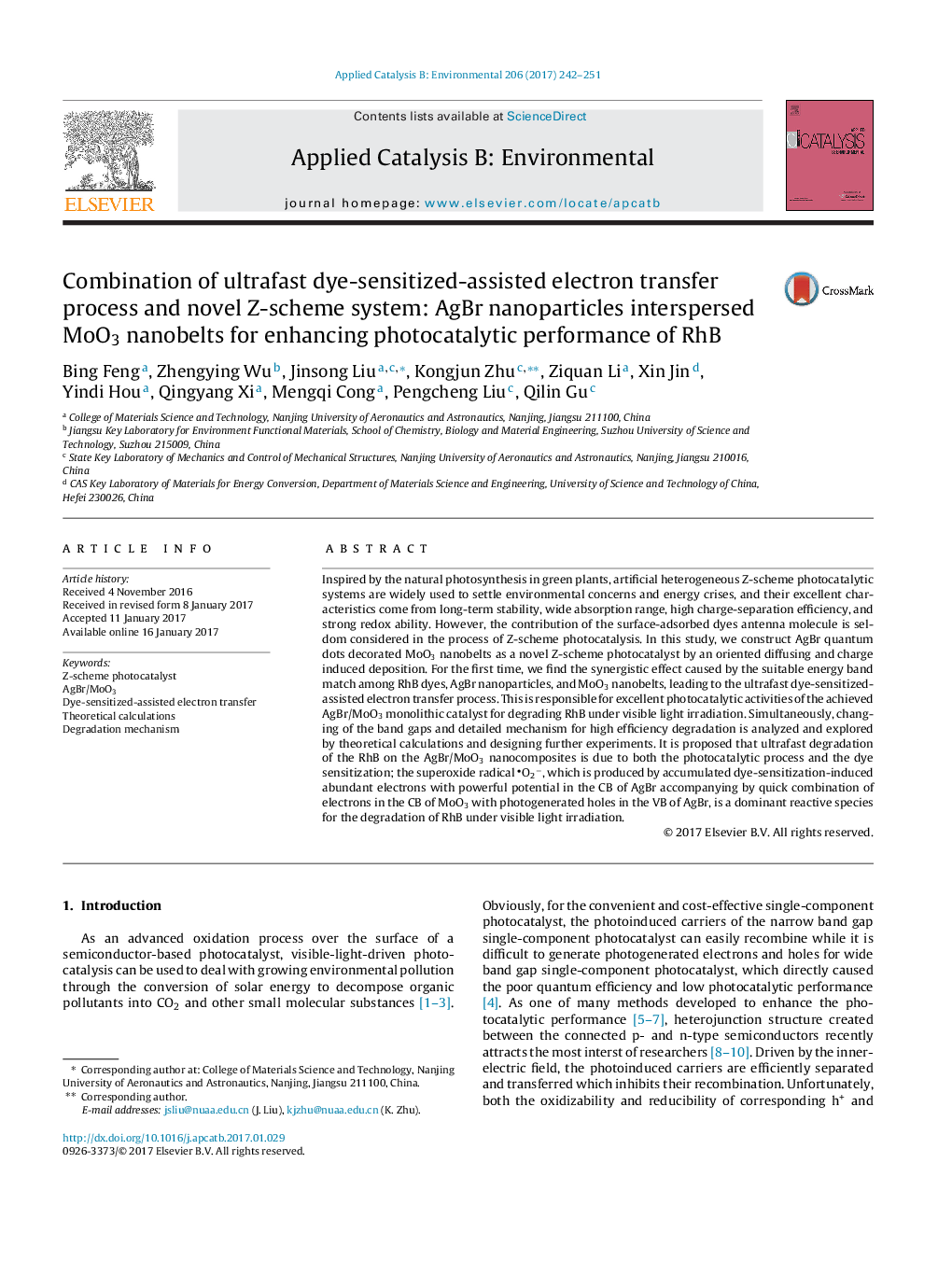| کد مقاله | کد نشریه | سال انتشار | مقاله انگلیسی | نسخه تمام متن |
|---|---|---|---|---|
| 6454674 | 1418814 | 2017 | 10 صفحه PDF | دانلود رایگان |

- AgBr nanoparticles interspersed MoO3 nanobelts photocatalyst was synthesized by an oriented diffusing and charge induced deposition method.
- Ultra-short photocatalytic time (5Â min) and Ultra-high degradation efficiency (95%).
- Noticeable photocurrent response was detected under visible light irridiation, and O2â was confirmed to be a dominant reactive specie by experiments.
- Dye-sensitized-assisted electron transfer process was proposed.
- Redox ability of electrons was enhanced by photon-generated carriers recombination on the ohmic contact interface.
Inspired by the natural photosynthesis in green plants, artificial heterogeneous Z-scheme photocatalytic systems are widely used to settle environmental concerns and energy crises, and their excellent characteristics come from long-term stability, wide absorption range, high charge-separation efficiency, and strong redox ability. However, the contribution of the surface-adsorbed dyes antenna molecule is seldom considered in the process of Z-scheme photocatalysis. In this study, we construct AgBr quantum dots decorated MoO3 nanobelts as a novel Z-scheme photocatalyst by an oriented diffusing and charge induced deposition. For the first time, we find the synergistic effect caused by the suitable energy band match among RhB dyes, AgBr nanoparticles, and MoO3 nanobelts, leading to the ultrafast dye-sensitized-assisted electron transfer process. This is responsible for excellent photocatalytic activities of the achieved AgBr/MoO3 monolithic catalyst for degrading RhB under visible light irradiation. Simultaneously, changing of the band gaps and detailed mechanism for high efficiency degradation is analyzed and explored by theoretical calculations and designing further experiments. It is proposed that ultrafast degradation of the RhB on the AgBr/MoO3 nanocomposites is due to both the photocatalytic process and the dye sensitization; the superoxide radical O2â, which is produced by accumulated dye-sensitization-induced abundant electrons with powerful potential in the CB of AgBr accompanying by quick combination of electrons in the CB of MoO3 with photogenerated holes in the VB of AgBr, is a dominant reactive species for the degradation of RhB under visible light irradiation.
186
Journal: Applied Catalysis B: Environmental - Volume 206, 5 June 2017, Pages 242-251